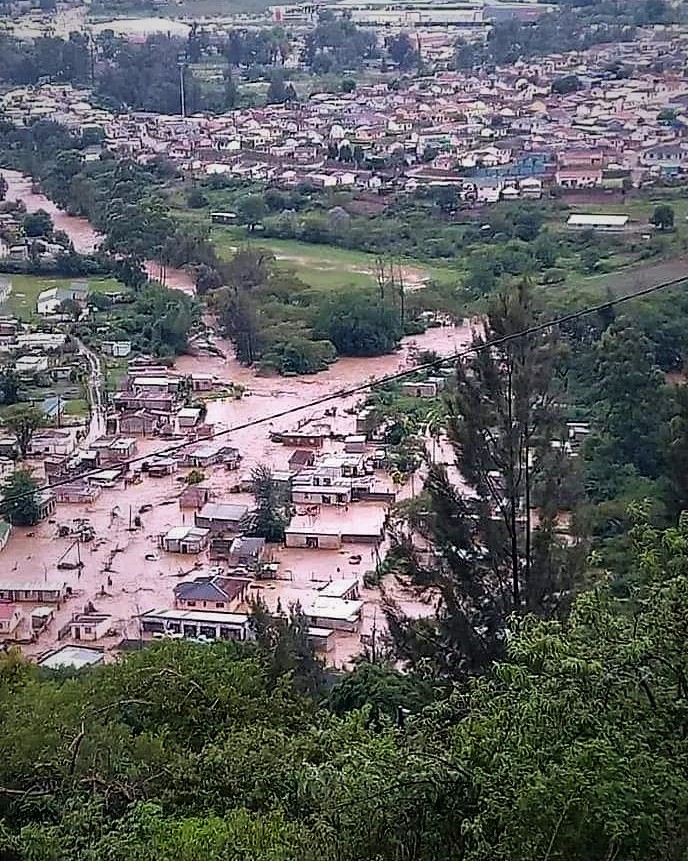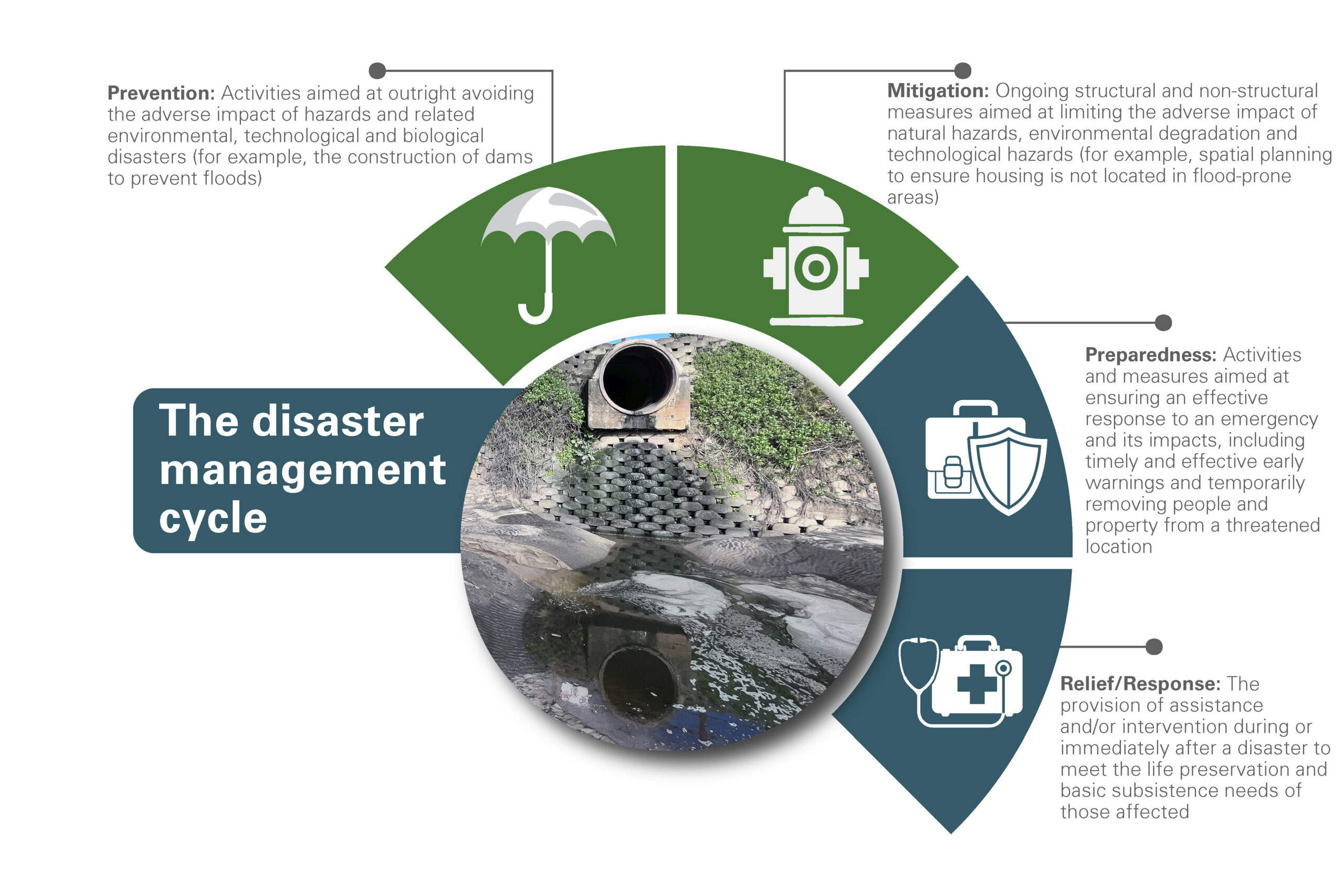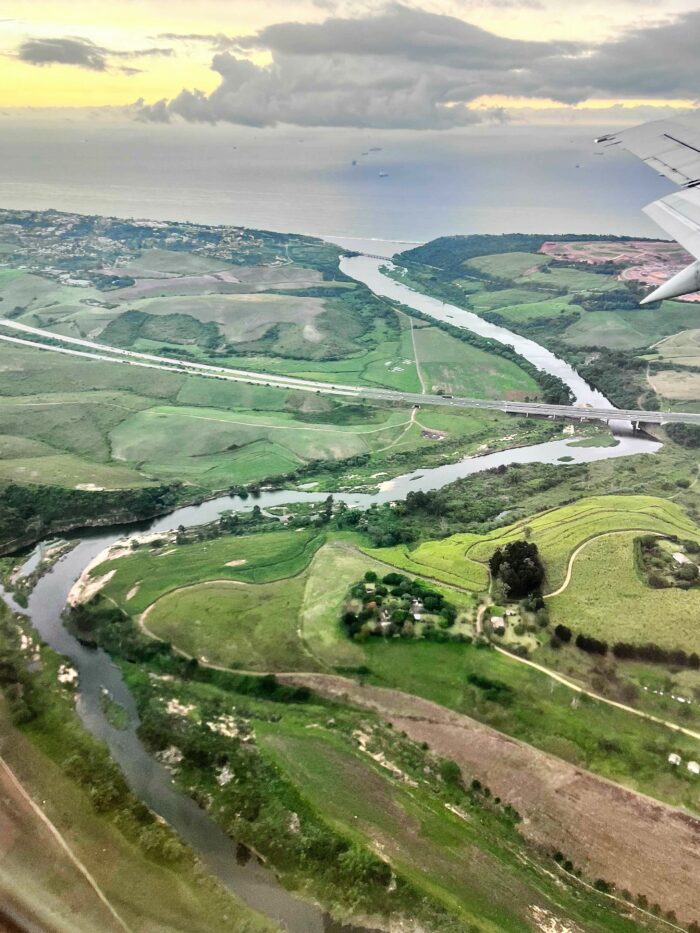
While hazards may be natural in origin, it is the way in which societies have developed that causes them to become disasters. Key to effective disaster risk reduction is driving down prevailing vulnerability conditions through ongoing development programmes rather than mounting a major response only once a crisis has struck. The HSRC’s Dr Thanyani Madzivhandila outlines lessons from the KwaZulu-Natal floods that can inform future disaster reduction strategies.
For two weeks in April 2022, a slow-moving storm, Issa, passed over KwaZulu-Natal, the Eastern Cape and North West provinces. In its wake, neighbourhoods flooded, buildings collapsed, lights went out and taps ran dry. More than 440 people were killed, and an estimated 40 000 fled their homes. President Cyril Ramaphosa declared the region a state of disaster.
Tragically, much of the damage could have been avoided had proper preventative and mitigation measures been in place.
In Durban, the worst-affected city, many homes in poorer neighbourhoods were built on open, unsafe ground in low-lying areas, leaving low-income families particularly vulnerable to flooding and landslides. Poor building standards and weaknesses in spatial planning and storm drainage systems also exacerbated the disaster.

What makes a disaster?
An event is generally considered a disaster if it causes human, material, economic and environmental losses that exceed the ability of the affected communities to cope using their own resources.
In other words, if communities are able to cope independently with the aftermath of a natural hazard, such an event would not be regarded as a disaster. Prevention and mitigation are, therefore, central to achieving the goal of disaster risk reduction, by lessening communities’ vulnerabilities in the face of natural hazards and strengthening sustainable development opportunities. For example, in the case of floods, responses should include early warnings and evacuation, proper infrastructure, and adequate spatial planning.
Low-income areas in KNZ were particularly affected by the April 2022 floods.
Photo: Minishle Sishi
South Africa’s Disaster Management Act provides for an integrated and coordinated disaster risk management policy. It focuses on preventing or reducing the risk of disasters, mitigating the severity, enhancing preparedness, enabling rapid and effective responses, and providing for post-disaster recovery. Unfortunately, despite this legislation, the KwaZulu-Natal floods demonstrate that South Africa struggles to prevent or mitigate disasters, instead applying a mostly ‘firefighting’ approach. Changing this focus will be increasingly important to enhancing communities’ resilience in the face of the climate crisis and more frequent natural hazards.
The disaster management cycle

Prevention: Activities aimed at outright avoiding the adverse impact of hazards and related environmental, technological and biological disasters (for example, the construction of dams to prevent floods)
Mitigation: Ongoing structural and non-structural measures aimed at limiting the adverse impact of natural hazards, environmental degradation and technological hazards (for example, spatial planning to ensure housing is not located in flood-prone areas)
Preparedness: Activities and measures aimed at ensuring an effective response to an emergency and its impacts, including timely and effective early warnings and temporarily removing people and property from a threatened location.
Relief/Response: The provision of assistance and/or intervention during or immediately after a disaster to meet the life preservation and basic subsistence needs of those affected.
Source: Holloway, A. 2003. Disaster risk reduction in Southern Africa: Hot rhetoric-cold reality. African Security Review, 12(1): 29–38
Towards a more proactive approach
The KwaZulu-Natal flooding disaster underscores the need for South Africa to move beyond a relief/response (firefighting) approach to dealing with natural hazards. The emphasis should be on proactively reducing the risk of disasters, rather than attempting to mitigate the impact once the damage has already occurred.

Prevention measures include bottom-up approaches to reducing community vulnerability. In a recent study in the South African Geographical Journal, Garikai Membele and colleagues argue that local knowledge can add value in mapping the risk of floods in local communities in South Africa. While geographical information systems process spatial data on flooding risk, indigenous knowledge provides useful information about the human factors that contribute to vulnerability at a localised level, such as in informal settlements.‘South Africa’s laws and regulations make provision for using indigenous knowledge in reducing flood disasters. But the use of this approach is still relatively low,’ they write in The Conversation.
Other than continuing to focus on the disaster management cycle, effective disaster risk reduction strategies should be based on careful risk identification and analysis before prevention or mitigation actions are implemented. Furthermore, adequate capacity, skills and commitment should be raised within the risk, hazards and disaster sectors.
Photo: Antoinette Oosthuizen, HSRC
Adequate infrastructure, proper spatial planning and adoption of technology to aid the processes of disaster prevention and mitigation should be emphasised. Most importantly, the government needs to address the socioeconomic conditions of the majority of the South African population, which push them to settle in unauthorised, low-lying and flood-prone areas.
Researcher contact: Dr Thanyani Madzivhandila, a research director in the HSRC’sDevelopmental, Capable and Ethical State division
Edited by: Andrea Teagle, a science writer in the HSRC’s Impact Centre


